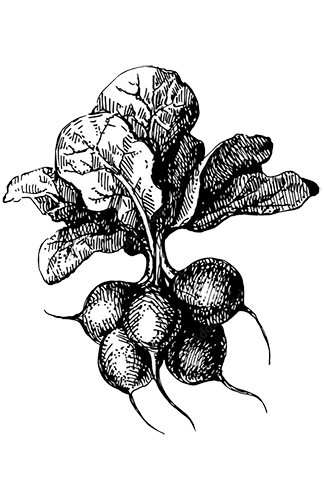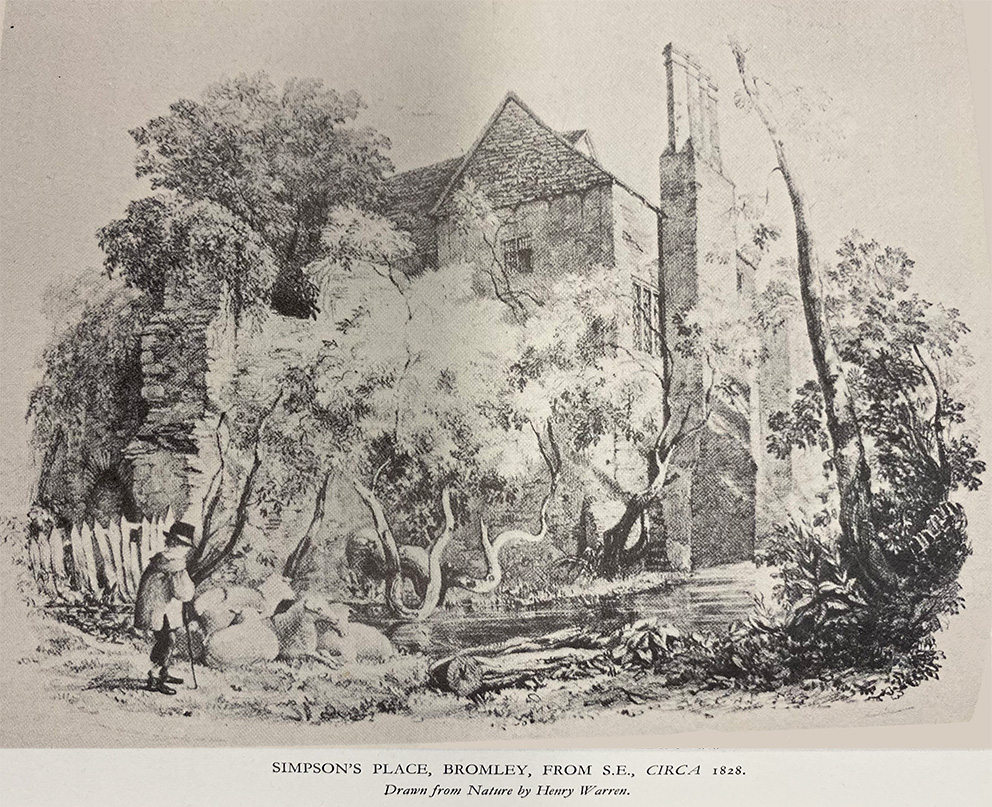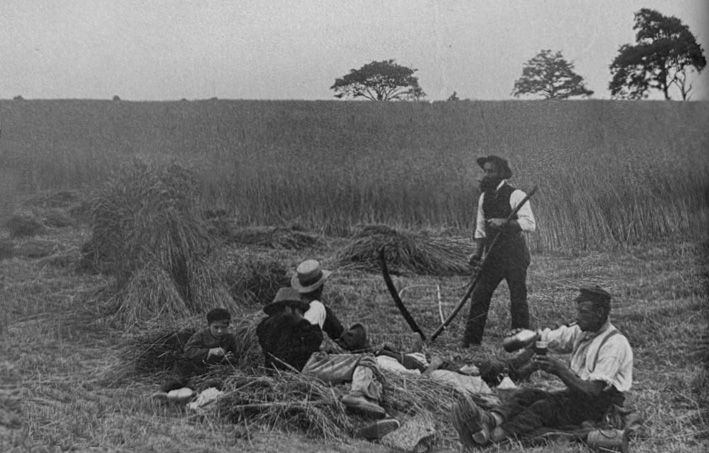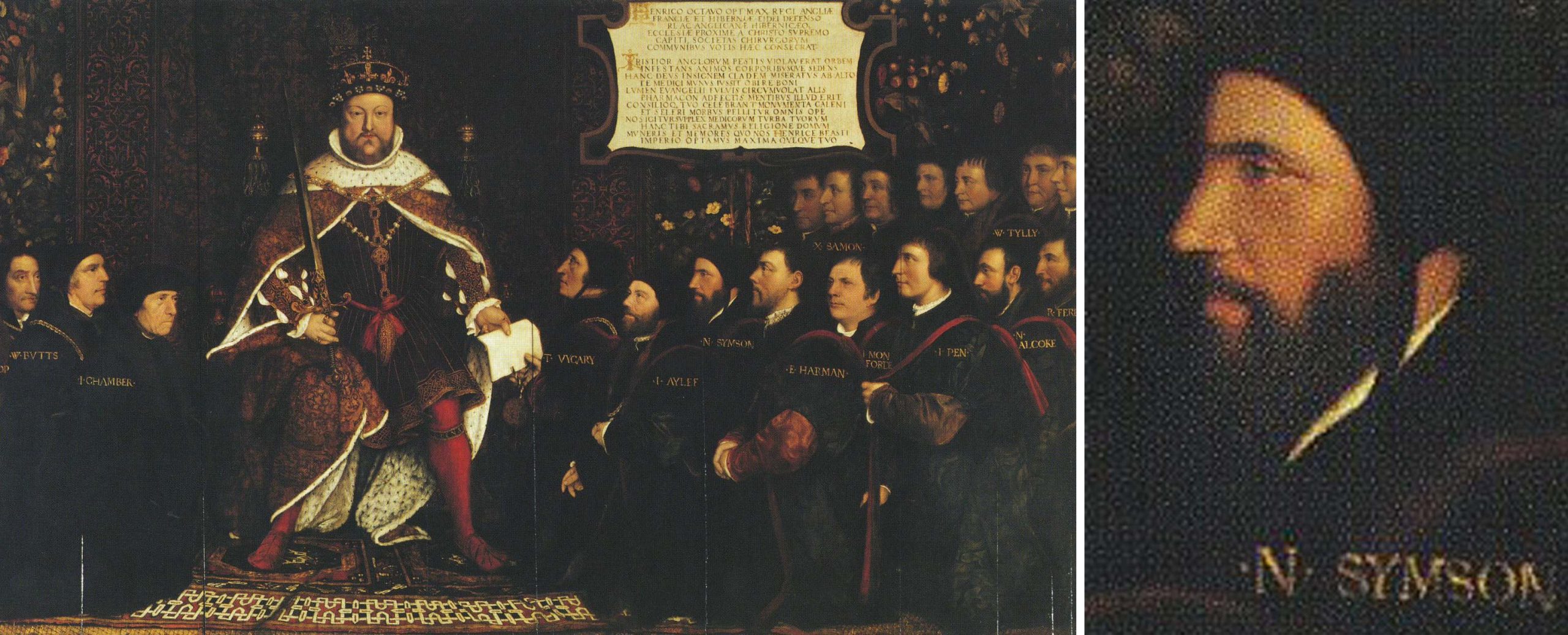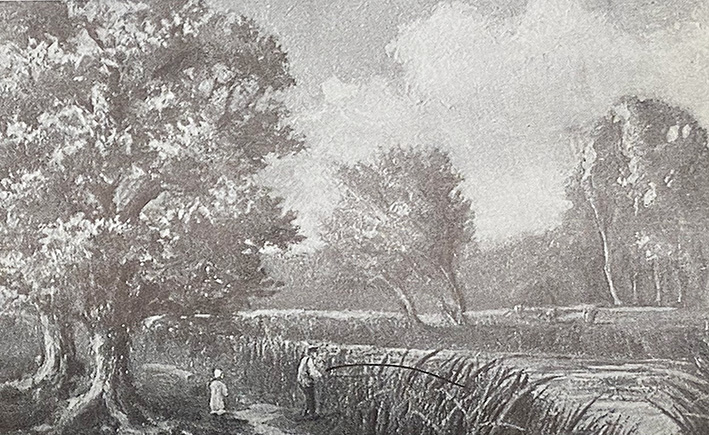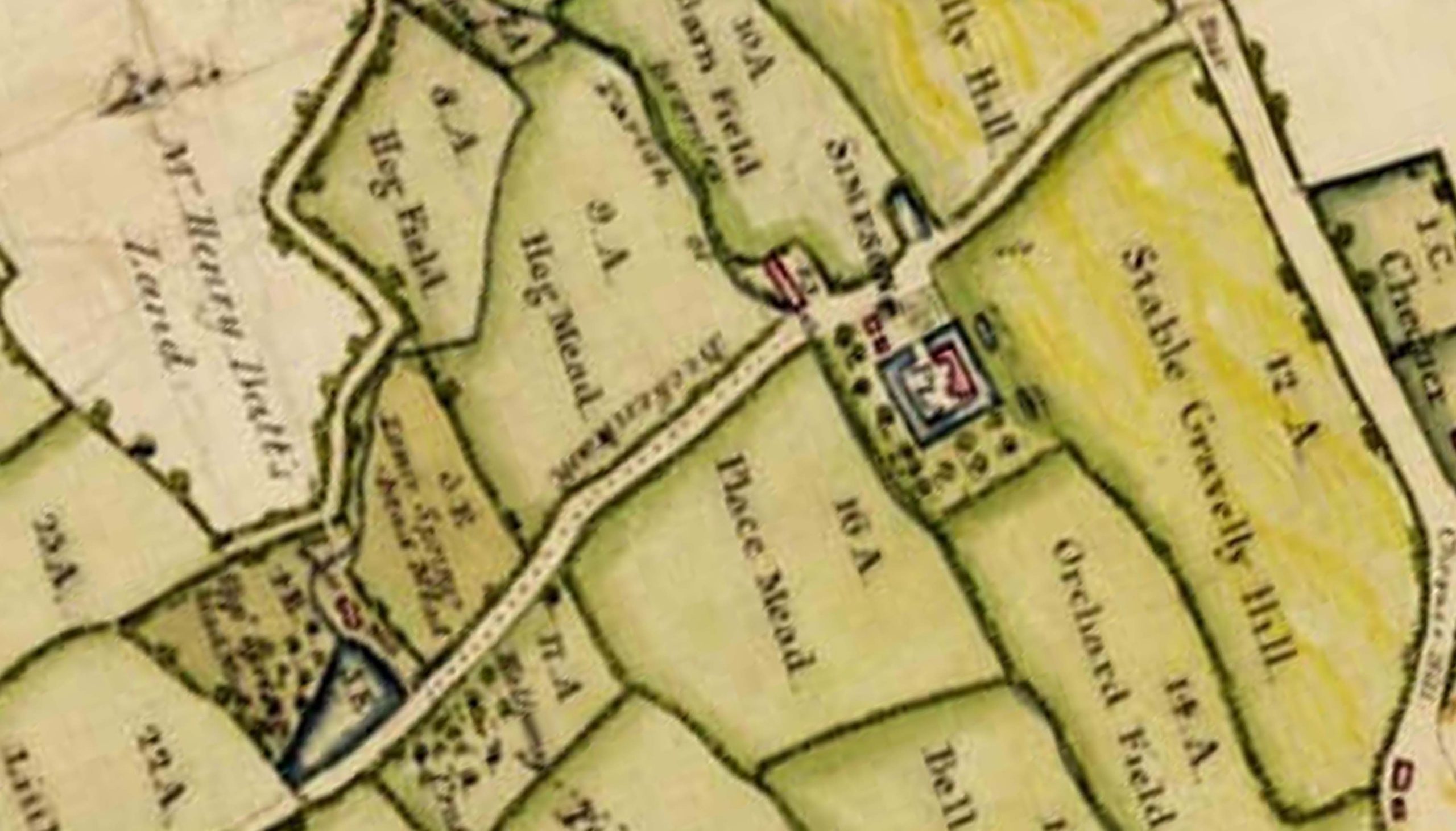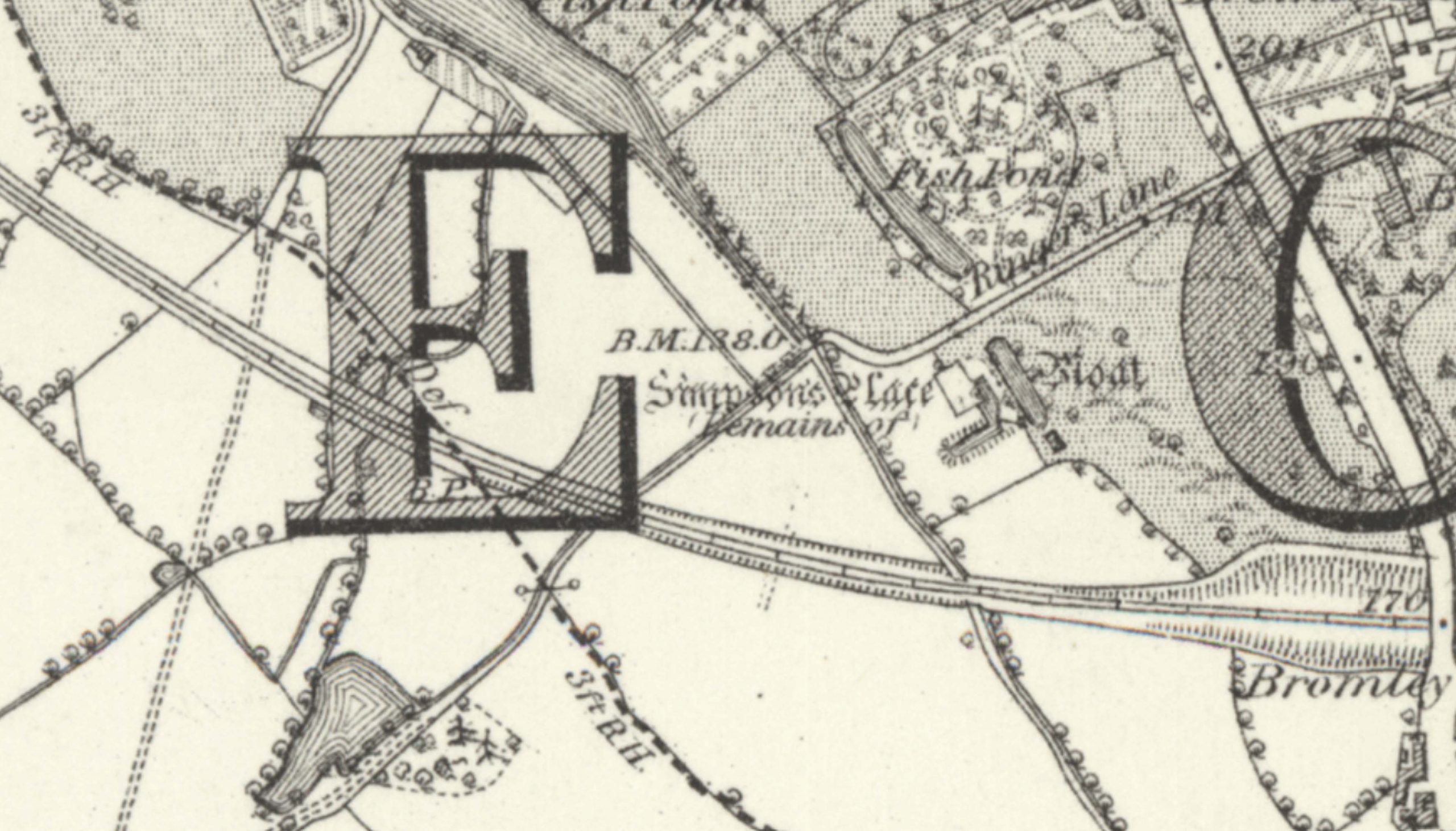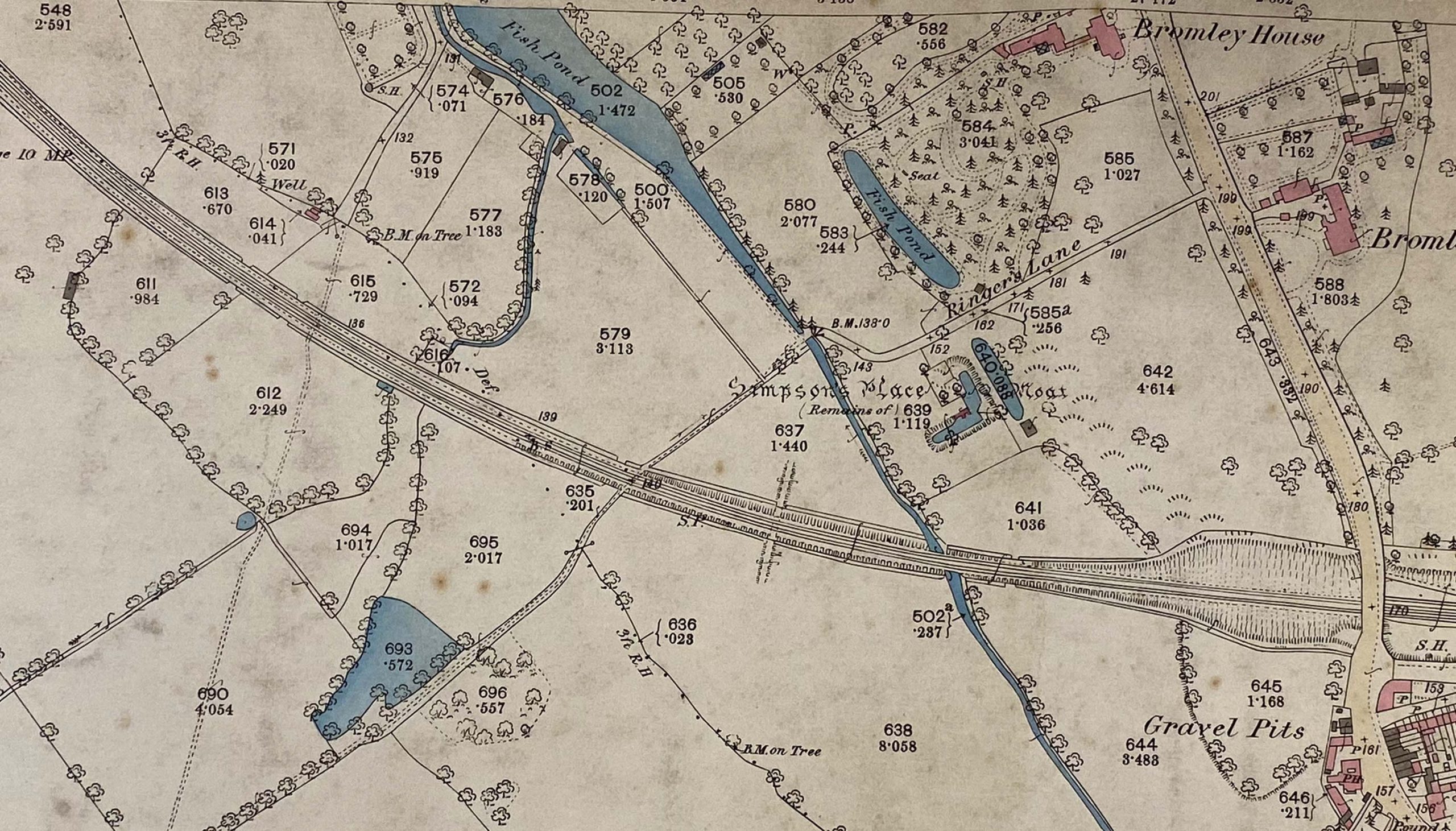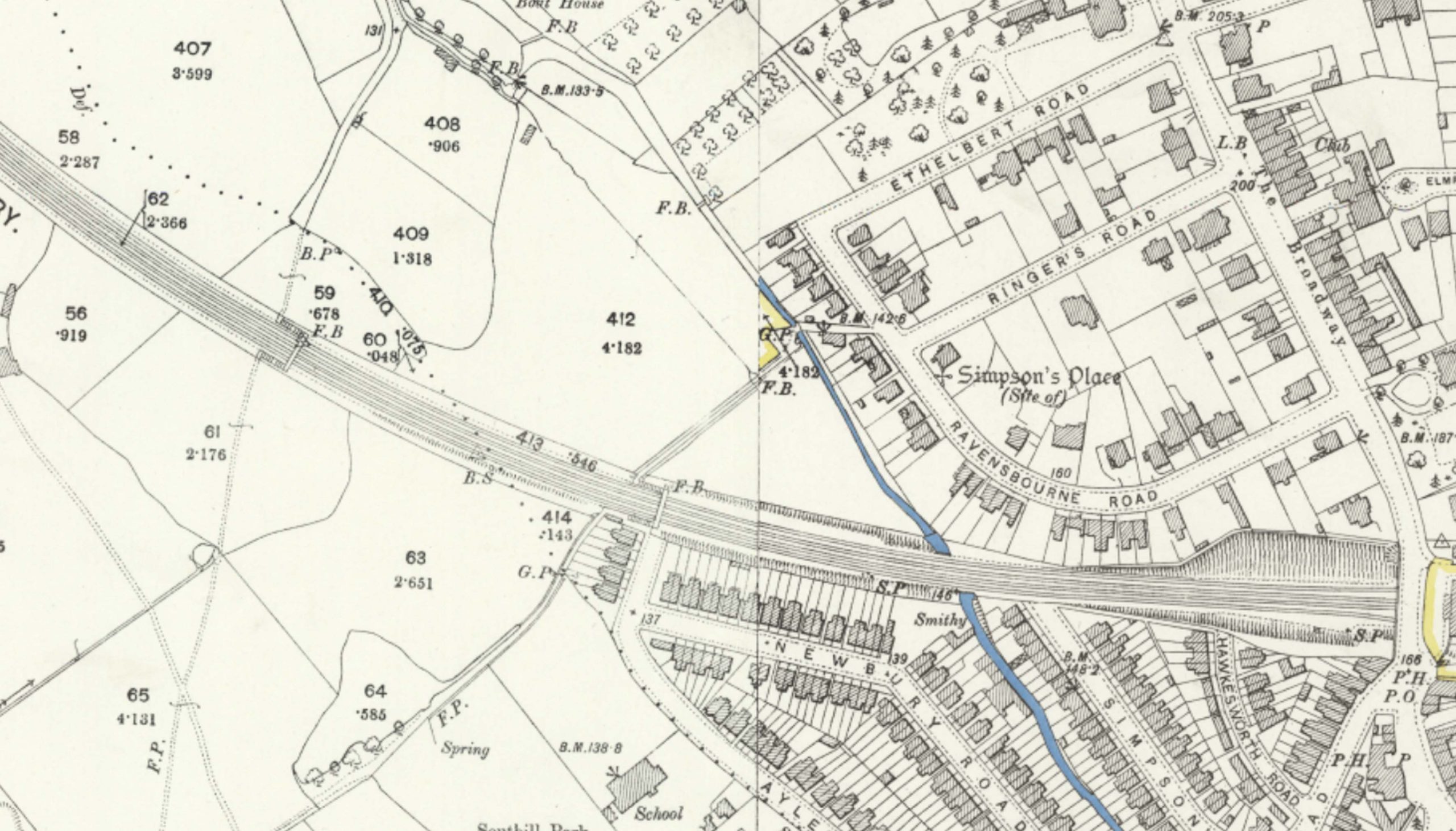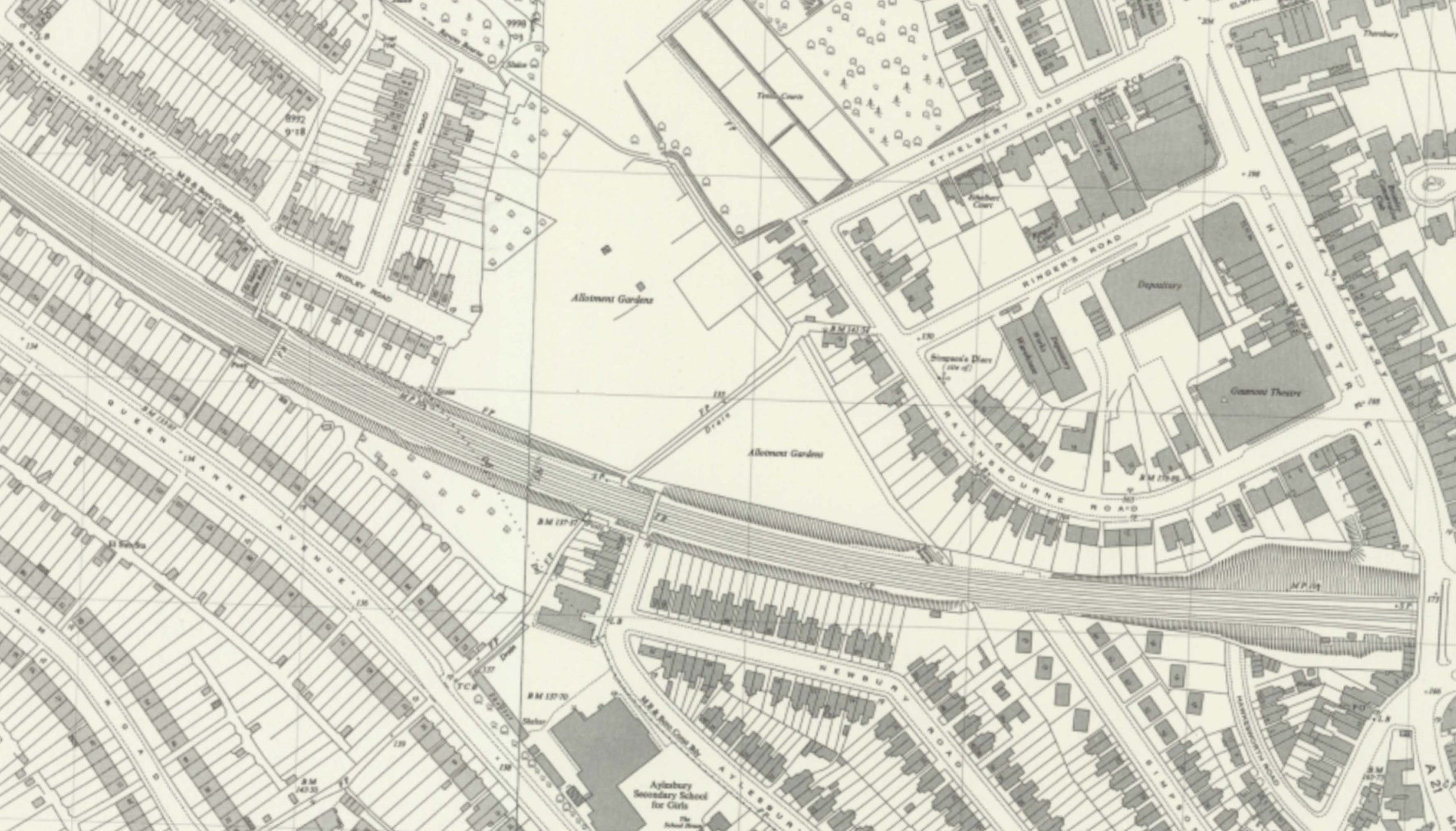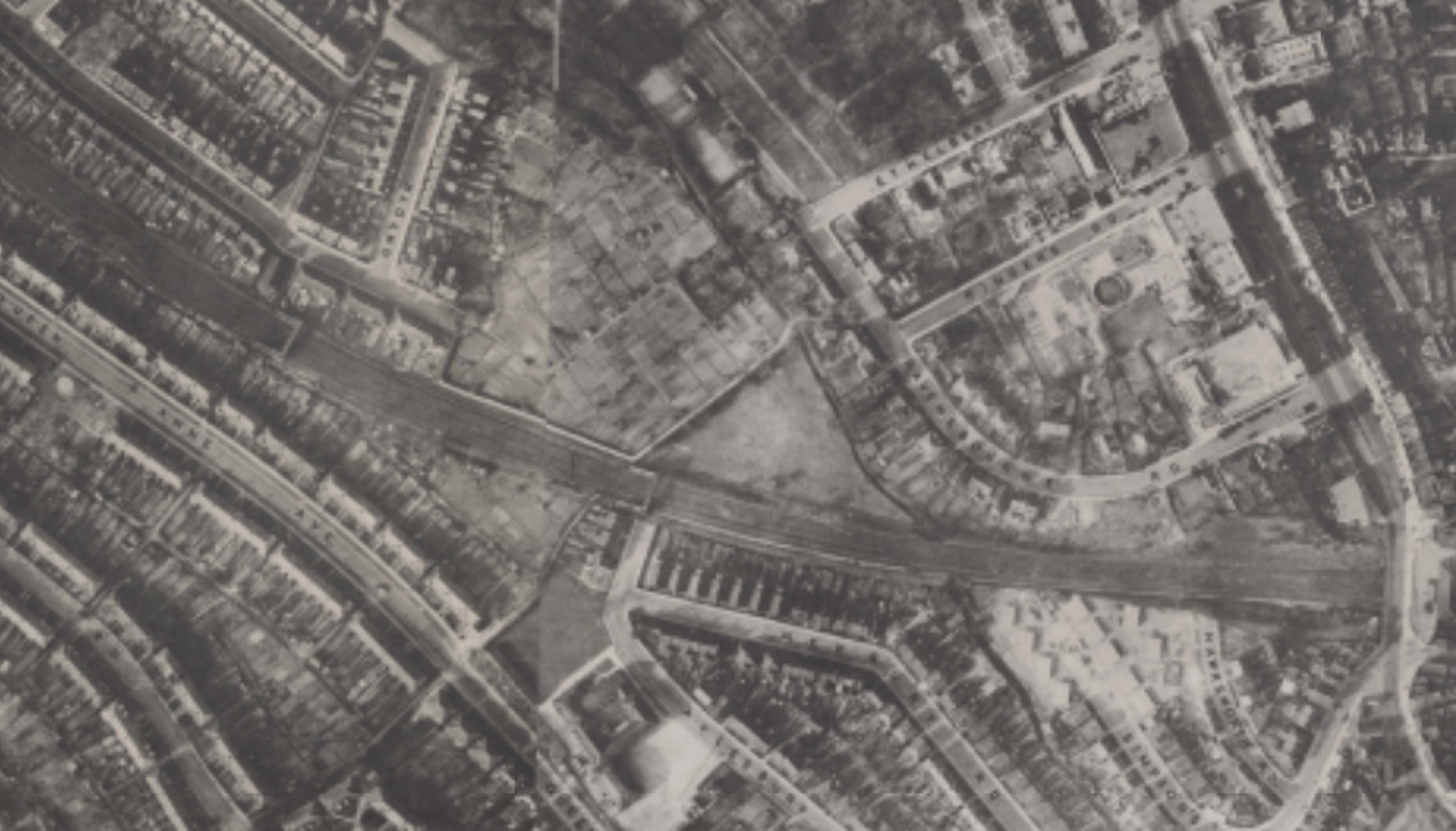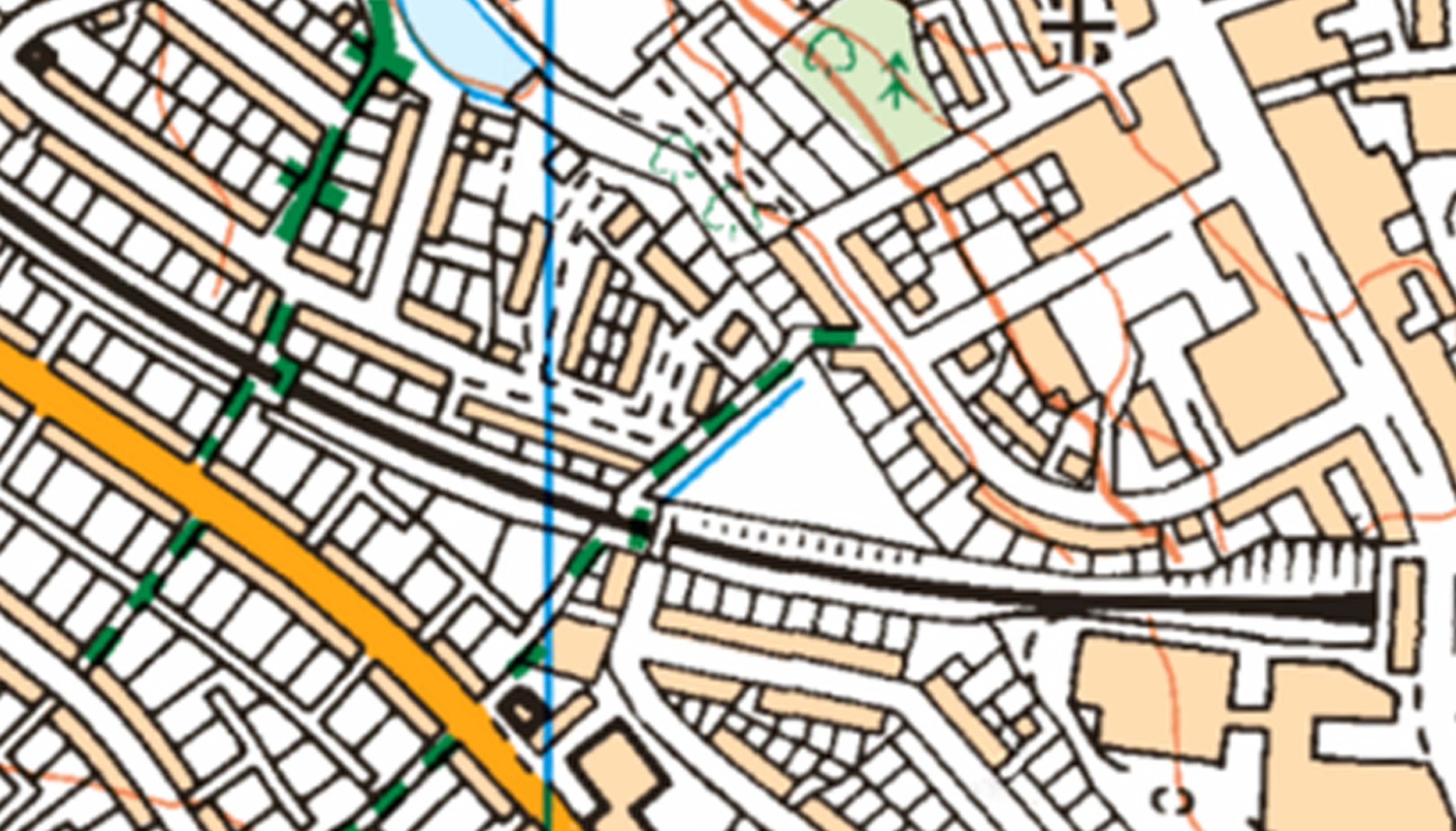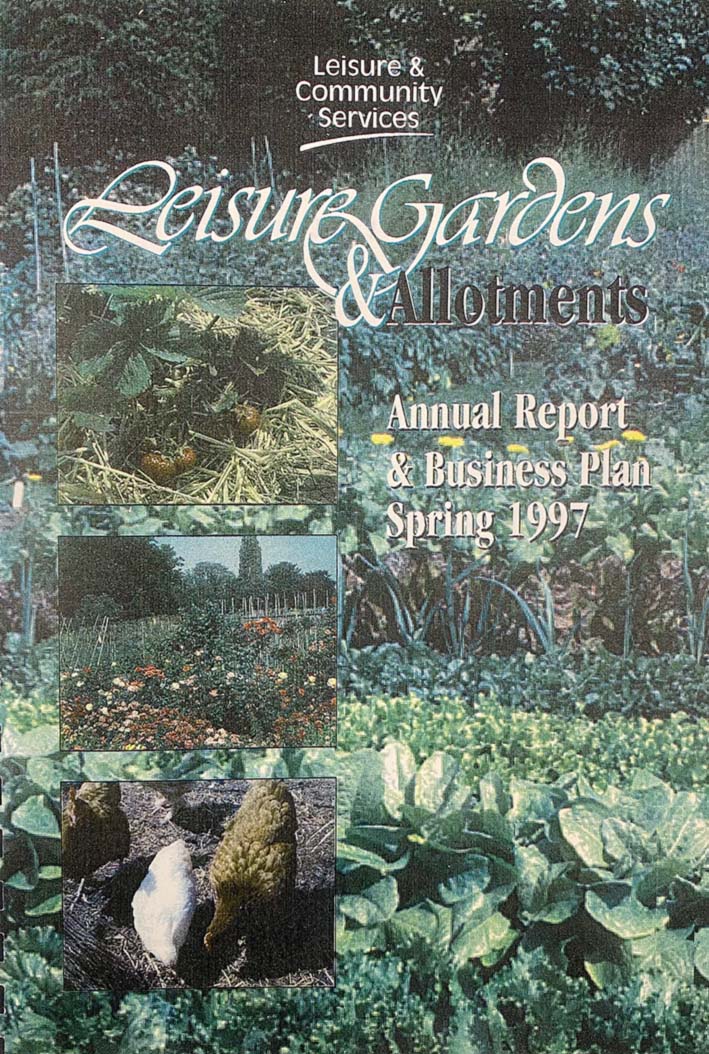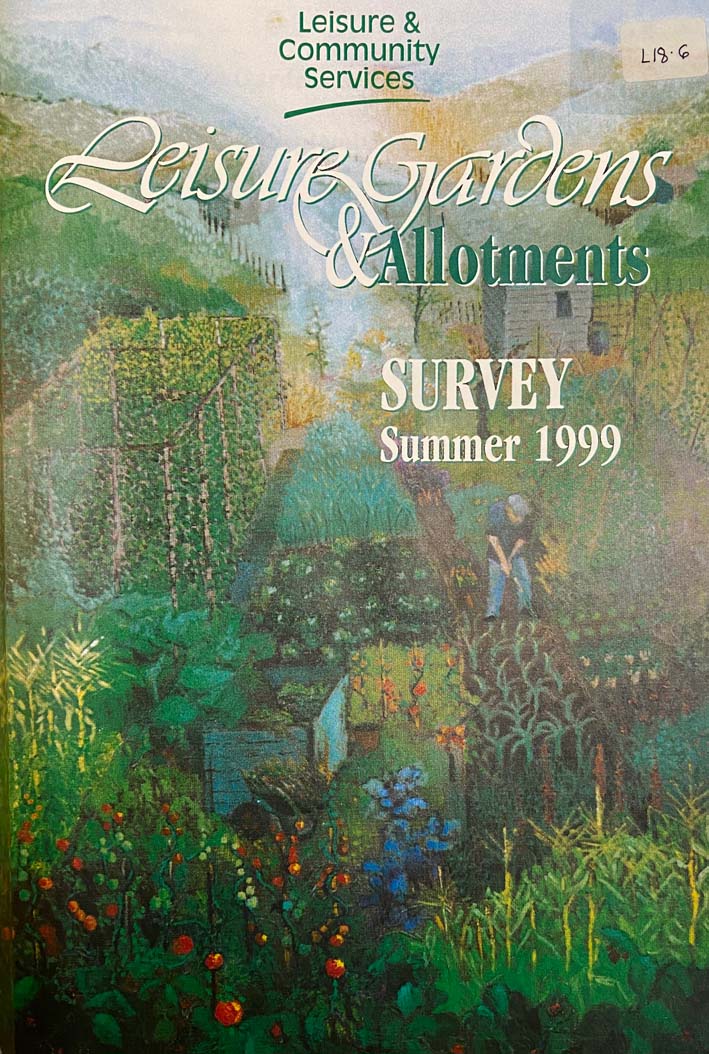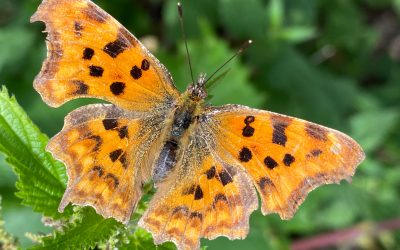History of Ravensbourne Road Allotments
Until comparatively recently Bromley was open fields and rolling countryside, changing on the arrival of the railway in 1858.
Ravensbourne Road Allotments sits in what would have been Place Mead in the grounds of Simpson’s Manor Farm estate. As shown on the earliest detailed mapped record of the area in 1735, by Hugh Raymond.
Simpson’s Manor was originally a medieval fortified manor house. Also known as Simpson’s Place, it was a large courtyard-type defensible structure, surrounded on all sides by a deep moat. Access was by a drawbridge on the northern side. Evidence of habitation at the site dates back to the reign of Edward I (1272–1307) with de Banquel family holding the manor in 1296. A Royal licence to crenellate was granted in August 1310.
The land was later acquired by John Simpson in the late 15th century, who gave his name to the property. His descendant, Nicholas Simpson, a barber to King Henry VIII, was reputedly responsible for adding a prominent red-brick chimney to the house in the Tudor period. The property eventually passed through several families, including the Styles and the East India Company’s Charles Raymond. Raymond also owned Knepp, leaving this to his daughter who married William Burrell, whose descendants are still there today.
The actual site of Simpson’s Manor was on the current Ravensbourne Road, the site presently occupied by Quaker Friends Meeting House. The manor house was eventually abandoned and fell into disrepair after 1815 and demolished around 1869. Read more about Simpson’s Place.
Simpsons Place Farm Map, 1735 Bromley Historic Collections
Simpson’s Place, 1828 Bromley Historic Collections
Simpsons Place Farm Map, 1735 Bromley Historic Collections
History of Ravensbourne Road Allotments
Until comparatively recently Bromley was open fields and rolling countryside, changing on the arrival of the railway in 1858.
Ravensbourne Road Allotments sits in what would have been Place Mead in the grounds of Simpson’s Manor Farm estate. As shown on the earliest detailed mapped record of the area in 1735, by Hugh Raymond.
Simpson’s Manor was originally a medieval fortified manor house. Also known as Simpson’s Place, it was a large courtyard-type defensible structure, surrounded on all sides by a deep moat. Access was by a drawbridge on the northern side. Evidence of habitation at the site dates back to the reign of Edward I (1272–1307) with de Banquel family holding the manor in 1296. A Royal licence to crenellate was granted in August 1310.
The land was later acquired by John Simpson in the late 15th century, who gave his name to the property. His descendant, Nicholas Simpson, a barber to King Henry VIII, was reputedly responsible for adding a prominent red-brick chimney to the house in the Tudor period. The property eventually passed through several families, including the Styles and the East India Company’s Charles Raymond. Raymond also owned Knepp, leaving this to his daughter who married William Burrell, whose descendants are still there today.
The actual site of Simpson’s Manor was on the current Ravensbourne Road, the site presently occupied by Quaker Friends Meeting House. The manor house was eventually abandoned and fell into disrepair after 1815 and demolished around 1869. Read more about Simpson’s Place.
Simpson’s Place, 1828 Bromley Historic Collections
Springhill Farm, College Rd, 1883 – a still rural Bromley Bromley Historic Collections
Ravensbourne River with hopeful fisherman Bromley Historic Collections
Simpson’s Manor had stood in the valley of the Ravensbourne, then a considerable stream, the moat being fed by a small brook, which ran through it on its way to the Ravensbourne.
The River Ravensbourne, which is now culverted and runs underneath the path to the allotment’s side entrance, would have flowed freely to the north of the allotments. Trout once abounded in the clear waters, the last fish to be caught here was accredited to Joseph Wells, father of HG Wells.
Read more about River Ravensbourne.
Simpson’s Manor had stood in the valley of the Ravensbourne, then a considerable stream, the moat being fed by a small brook, which ran through it on its way to the Ravensbourne.
The River Ravensbourne, which is now culverted and runs underneath the path to the allotment’s side entrance, would have flowed freely to the north of the allotments. Trout once abounded in the clear waters, the last fish to be caught here was accredited to Joseph Wells, father of HG Wells.
Read more about River Ravensbourne.
Ravensbourne River with hopeful fisherman Bromley Historic Collections
There were originally two allotments; the current Ravensbourne Road site and another, the Crosswood allotments, which covered the land now occupied by the housing of Ridley Road, Marina Close, Forstal Close and Cheveney Walk.
Crossword Allotments are first mentioned in the public record in 1900. It is less clear when the Ravensbourne Allotments were first used as allotments plots, however we know for sure they were in use by 1945.
The photo from the Crosswood Allotments is from 1922 and as you can see, the gardening attire was a little different to what we choose to wear these days.
Ravensbourne Road Allotment Map through time Bromley Historic Collections
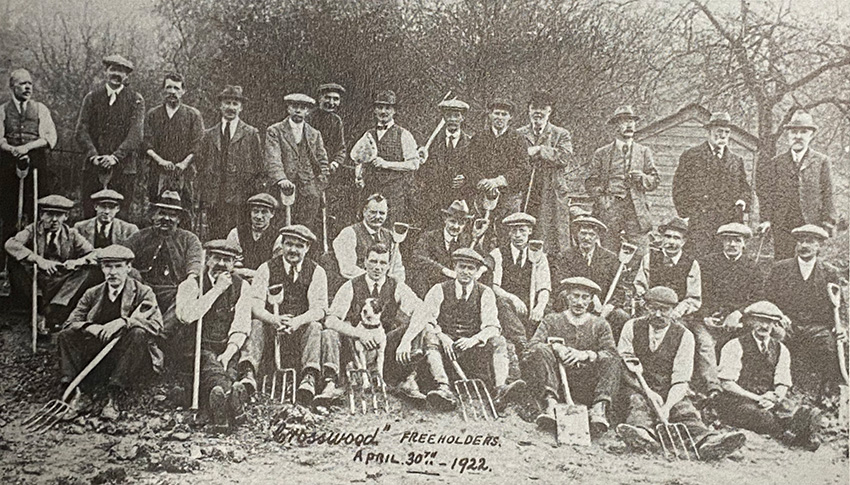
Crosswood Freeholders, 30 April 1922 Bromley Historic Collections
Bromley Leisure and Community Services published ‘The Leisure Gardens & Allotments Survey’ in both 1997 and 1999. It makes for interesting reading, showing just how some things change and how some stay the same at Ravensbourne Road Allotment, click on each image for details.
Click to download courtesey of Bromley Historic Collections
Click to download courtesey of Bromley Historic Collections
News & Events
October Checklist
The season’s changing, the days are noticeably becoming shorter and temperatures are dropping, but there’s still a chance to do some last sowings of winter salads and greens. Autumn sown vegetables and plants will bloom a couple of weeks earlier than a spring sown seeds…
No Sugar Plum Compote Recipe
A glut of plums? Inspired by the classic Italian plum preserve, this jam recipe uses only with ripe plums, apples and lemons. You can spice the jelly with cinnamon, ginger, and star anise if so desired…
Biodiversity Report
In July 2025 we were privileged to receive a visit from idverde’s senior conservation officer, Ian Wright, in order to complete an initial biodiversity assessment of Ravensbourne Road Allotment. There were 4 main areas discussed which were…
